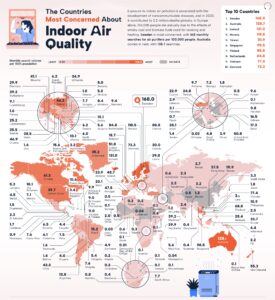Road pollution at pram height studied in Glasgow
Six-month Scottish Government study looked at variation between pollution levels at adult and child buggy heights
The initial findings of a six-month study of pollution levels at both average adult and child pram or buggy height on Glasgow city centre roads were presented at the annual Air Quality and Emissions Show 2015 in Telford yesterday (April 23).

Ricardo-AEA’s Stephen Stratton presented the initial findings at the AQE Show 2015 yesterday (April 23)
Commissioned by the Scottish Government, the aim of the study was to determine the relationship between height from the pavement and roadside air quality, as well as looking at seasonal variances and possible differences between mobile air quality monitoring and fixed, static sampling methods.
According to consultants Ricardo-AEA, which carried out the study, while most vehicle emissions occur less than one metre above ground, current sampling and monitoring strategies do not take account of the possible variations in air quality with height above the ground and therefore may not adequately reflect these variations.
As a result, Ricardo-AEA developed a mobile air quality station with a range of equipment capable of measuring a number of pollutants at the average height of a child pram or buggy (0.8 metres) as well as the average height of an adult (1.68 metres) simultaneously.
Pollutants
The mobile station measured particulate matter PM2.5, black carbon, ultrafine particles, nitrogen dioxide, sulphur dioxide, carbon monoxide, carbon dioxide, ozone and benzene, as well as meteorological conditions and temperature.
The AQE Show heard from Stephen Stratton, air quality consultant and data manager at Ricardo-AEA, who led the six month study, the findings of which he hopes will help inform air quality policy in Scotland.
He said that such a study combining mobile monitoring with monitoring at more than one height has not been carried out before: “This is the first time that this type of study has been carried out. The results confirm what was seen in the literature review.”
According to Mr Stratton, while the full results are “due to be published soon”, initial analysis indicates that there are different pollution concentrations at different heights.
However, he emphasised that this is heavily dependent on the pollutant, source of the pollutant, meteorological conditions and also the microenvironment, adding that there is “quite a lot of variation” in the findings between different pollutants.
For instance, at the 0.8m pram/buggy height, results appeared to generally show higher concentrations of the likes of PM10, PM5.0, PM2.5 and black carbon. At 1.68m, meanwhile, there were higher concentrations of sulphur dioxide, carbon dioxide and nitrogen dioxide
And, regarding the differences found between mobile and static sampling, he said: “We saw much higher concentrations of PM2.5 and PM10 while walking around than at the monitoring site.”
However, Mr Stratton said that the study did not look into whether there were significant variances in pollution levels at difference distances from roadsides.
And, as it was a relatively small study only looking heights below three metres, he said: “Further work could be done to see whether there is a difference [in pollution levels] at different heights.”
Method
A predetermined route along Glasgow city centre roads was used to carry out the sampling with the mobile monitor on two days each week between February and August 2014.
Eight mobile sampling exercises took place along the route, with data collected for each day of the week during the six month period.
“We probably lost a lot of weight,” Mr Stratton joked. “We had a very fit air quality monitoring team.”
In addition, six co-location sampling exercises were simultaneously undertaken at a fixed automatic monitoring site in the city for comparison.
Glasgow was chosen as the location for the study due to it being a large, busy urban area, as well as its convenience, with Ricardo-AEA’s Scotland office being located on nearby Blythswood Square in the city.
Mr Stratton said: “The study has proved really useful for carrying out pollution maps of an area.”













Since the science is so complicated and depends on so many factors, height, pollutant, wind speed, location, human variability, etc, we should all have more respect for what we do. Try to go easy on our planet, and also show some respect for neighbors. To start we could all wear layers of clothes and heat the individual instead of the whole house!